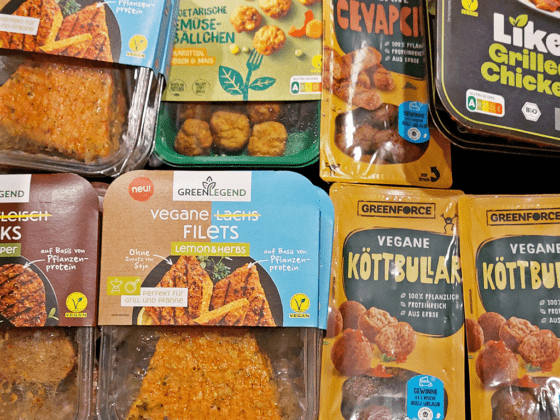By our author Carsten Gensing
From the far north comes an initiative with spectacular goals: A former caterer and his team are working hard to realize the vision of a plastic-free city in their homeland. The initiative’s approach is as simple as it is promising: They are achieving measurable success with an everyday tool, and the strategy can be applied everywhere. Almost 50 companies and cities are already taking part. A city in Baden-Württemberg, which is certainly the least expect, is currently even in the fast lane.
Rostock as the pioneer of a new movement
But first back to the far north. The state of Mecklenburg-Vorpommern is said to sometimes lag a bit behind. Former Prime Minister Harald Ringstorff (SPD, † 81) put out an alleged Bismarck quote during his term in office in 2007. Ringstorff quoted the Reich Chancellor: “When the world ends, I’ll move to Mecklenburg, where everything happens 50 years later.” Given the tranquility of Mecklenburg’s beautiful Baltic coast, the slumbering villages in the long-stretched land between the Schaalsee and the Oder, Bismarck’s statement seems credible. Only there is no evidence for it.
Now something is growing up on the idyllic Baltic coast, which Otto von Bismarck could not count on – and which could possibly become reality in MeckPomm a few years earlier than in the rest of the Republic: The vision of a plastic-free city. Right on the coast, at the very top in the north – in Rostock. There, a caterer founded the initiative “Plastikfreie Stadt” (plastic-free city).
In the beginning there is an inventory and an Excel spreadsheet
A video call meeting with Samuel Drews (38) and his fellow campaigner Elisabeth Möser (35). It quickly becomes clear that the two are not dreaming, they are already shaping the change – while using tools that some digital nerds would dismiss as Stone Age tools. Because instead of elaborately programmed software with app extensions, the team uses an Excel spreadsheet. “That’s how we start the inventory,” says Samuel, “it’s always at the beginning.” Specifically, this means that participating partners start by counting and listing everything that is made of single-use plastic – and enter it into the Excel spreadsheet. “We are mainly concerned with single-use plastic, that can be avoided,” explains Elisabeth.
Smallest items add up to unsustainable amounts
The first insights come quickly. Samuel: “We record individual items and extrapolate them to an annual volume. Then comes the big shock. Because even the smallest positions add up to volumes that are unsustainable.” He continues, “We hit these small sources everywhere. We work our way along the value chain – through purchasing, production, supplying employees and cleaning. Together with the companies, we thus find the blind spots.”
What are those spots? “Depends on the industry,” says Samuel, “in offices, it’s often about employee catering, in hotels it’s about consumables like soaps, shampoos and conditioners.” Then again, so are coffee capsules, which are still widely used. “But the problem is not solved if we take recycled plastic capsules instead of aluminum capsules. By doing that, we create a new problem. This must be thought in a circular direction,” says Elisabeth.
A hotel creates new ways to deliver goods
Businesses are one of four pillars on which the plastic-free city vision stands. “That’s where we reach people, that’s where they work, so there are quite a few levers,” Samuel says. One example: The initiative’s first partner hotel harnessed all levels of management to identify single-use plastic sources. Samuel Drews recalls, “This gave us tremendous leverage.” The hotel also drew consequences: Goods from regional suppliers are no longer delivered on euro pallets and wrapped in plastic film, but come tied up with belts on roller trolleys: “Each pallet is usually wrapped with 400 grams of film. This now falls away.”
Children win amber at the fair instead of cheap plastic
In addition to companies, there are three other pillars that must stand to make a city plastic-free: local government, legislative politics – and public spaces. “These are events, for example, such as the Hansesail in our city of Rostock,” explains founder Drews. The supporting program of the international sailing event also includes a funfair with a stand run by the initiative. There, children can fish targeted waste from an aquarium. While elsewhere there are low-quality toys made of cheap plastic as prizes, Elisabeth, Samuel and their team have come up with something new: “The kids can choose a piece from a treasure chest of ambers, thunderbolts and shells.” If they put it back in the aquarium, it ends up back where it belongs – and the children get to make a wish. Samuel: “That worked out great. And we have felt how we also reach the masses – especially the children.”
Municipal administration and politics must also get involved
The commitment of companies and the public alone is not enough. Regulations and laws for the avoidance of single-use plastic must come like the new reusable offer obligation introduced now. This is also where it shows who is really committed. Elisabeth: “Since the new directive is unfortunately only an obligation to offer customers reusable products and there is little general obligation to offer reusable products, it will continue to be up to customers to make the whole thing a success in the future. Consistent demand and calling for reusable solutions is the key to success. Unfortunately, we believe that the ordinance falls short when it comes to defining materials. Replacing a disposable product with a disposable product is of course not the right solution.”
These are the parameters for a plastic-free city
The creators of the plastic-free city are not discouraged by this. They have defined clear parameters for when a city can be considered plastic-free. For every 100,000 inhabitants, 50 businesses must offer reusable solutions and 25 must implement a single-use plastic inventory. In addition, the city government needs to be involved and public spaces need to be used. In the initiative’s home city, there is, among other things, the “Reusable for Rostock” campaign: Catering businesses offer food and drinks in reusable containers. This is advertised boldly.
Mannheim as a surprise city in the top
But who is currently ahead in Germany? Besides Rostock, there’s another city taking the fast – the mother city of the initiative that you wouldn’t expect. Elisabeth: “Mannheim is moving ahead. There’s a plastic avoidance strategy and companies there are getting on board with our inventory tool.” Elisabeth and Samuel suggest that it is very possible, that Mannheim overtakes their hometown Rostock on the last meters.
The idea of a plastic-free city also comes from the coast
If Rostock wins the title, it would be a small series: because Europe’s first plastic-free city is also located on the coast – in Cornwall, UK. Penzance is the name of the town that has been plastic-free since 2017. More than 125 restaurants and stores have joined in, dispensing completely with single-use plastic. “An ARD documentary inspired us at the time,” says Samuel, “we asked them right away, but they couldn’t help. They had more than 400 requests on the table. So we just started on our own.” That was in 2019. Four years later, the first small goal could be achieved – a plastic-free city in Germany.
Find out more about the Plastic-free City on the initiative’s website. Also exciting: Start-up develops a plastic alternative from agricultural waste.
You might also be interested in this: Reusable solutions instead of single-use plastic: After deposit bottles, now come deposit bags.
 English
English Deutsch
Deutsch




